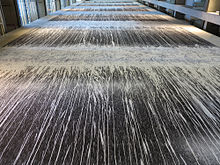For my final project I chose to focus on The Renaissance into more detail.
The Renaissance was a period of European history at the end of the Middle Ages and the rise of the Modernist World, during the 14th century throught to the 17th. It started as a cultural movement in Italy in the late Medieval Period. Its intellectual basis was humanism, derived from the rediscovery of classical Greek philosophy.
I chose the Renaissance because of some of the major artists involved in this movement. I also like how this period of art is more historical and how each artist have their own influences in their work.
One of the artists that I liked was Sandro Botticelli, he was an Italian printer and painter, he painted many portraits and many of his works were influenced by religion and religious subjects like the panels of Madonna and churches.
I like his work as each piece has its own theme with it either being religious or influenced by Venus. In the painting 'Venus And Mars' it shows the Gods in an allegory of beauty and valour. It shows the couple in a forest setting, surrounded by playful satyrs. This painting is typically held as an ideal of sensuous love of pleasure and play. There is a romantic and love theme in some of Botticelli's work especially the ones that include the God Venus.
Another artist i liked was Leonardo da Vinci. He was also an Italian artist, but was famous for other areas of work. As well as being a painter da Vinci was also a sculptor, architect, engineer and a scientist. One of thr many paintings I like is 'The Mona Lisa', i like it because of the many theories behind this painting. The many theories like the hidden smile but also that the painting is actually of a man dressed as a woman, this was suggested
because of the big hands but also because of the line across the forehead maybe suggesting a wig is being worn.
I also like Michelangelo. He was an Italian artist but also was a sculptor, architect, poet and engineer and was one of the high Renaissance artists who exerted an unparalleled influence on the development of Western Art. His work shows a theme of religion like in 'The Creation Of Adam' this is implying Adam touching the hand of God who is surrounded by angelic figures. The shape around the angelic figures looks like the shape of a heart. I also like Michelangelo's paintings he did for the Sistine Chapel and how all his work relate with having a similar theme of religion.
Lastly i like Jan Van Eyck. He was a Neverlandish painter of the late Middle Ages. He painted both secular and religious subject matter paintings including commissioned portraits and also oil paintings. One of his art works I liked was 'The Arnolfini Wedding'. In this picture it shows a young girl who is possibly pregnant, however the colour green suggests innocence and the red in the background suggests romance and love, but also danger.
I chose this art movement because I particularly liked the artists. However I didnt really like the Surrealism art movement as some of the work that was produced by the artist didn't really make much sense.
.jpg/300px-An_Oak_Tree_(conceptual_art_installation).jpg)




























